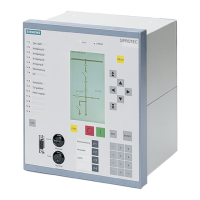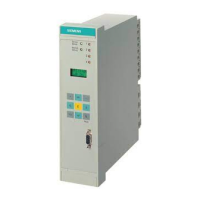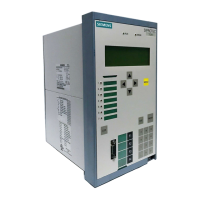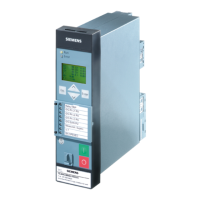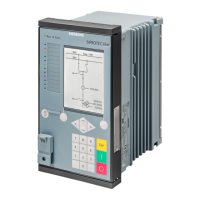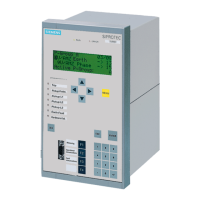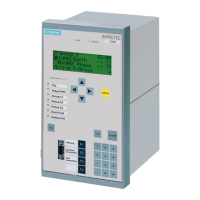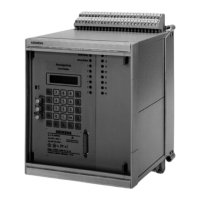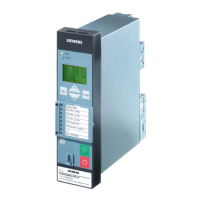Functions
6-1357SJ62 Manual
C53000-G1140-C121-1
in an inadvertent trip by the 50-2 element protecting the bus. Because zone sequenc-
ing is switched on at the bus relay, the bus relay counts the number of faults, and after
the first fault, blocks the 50-2 element from tripping. Therefore, for a permanent fault
on Feeder #3, the 50-2 element at the bus would have been blocked after the reclosing
attempt, and the 50-1 element at Feeder #3 would have tripped the circuit breaker in
0.4 seconds. Had the 50-1 element failed to clear the fault, the 50-1 element at the bus
relay, which is set for 0.9 seconds, would serve as backup protection.
For the bus fault F2, the 50-2 element at the bus would have cleared the fault in 0.4
seconds. The 50-1 element at the bus serves to backup the 50-2 element. Had zone
sequencing not been available, the 50-2 element at the bus relay could not have been
set to clear the bus fault in 0.4 seconds without causing coordination problems be-
tween the bus relay and the Feeder #3 relay. On a final note, zone sequencing is only
effective at the bus relay when all three feeders utilize high speed tripping prior to the
first reclosing attempt.
Figure 6-58 Illustration of Zone Sequencing and the Protection of Load Side Fuses
6.14.2 Programming Settings
General Settings The internal automatic reclosing system will only be effective and accessible if ad-
dress is to (QDEOHG during configuration or protective functions. If the automatic
reclosing function is not required, then address should be set to 'LVDEOHG. The
function can be turned 21 or 2)) at address )&7.
When a circuit breaker is manually closed into a fault, it is often desirable for the circuit
breaker to be immediately tripped and locked out. If a contact from an external control
switch is connected to a binary input and address %/.0$1&/26( is set to
<(6, then closing the circuit breaker via the external control switch will prohibit reclos-
ing from taking place.
Blocking Time and
Dynamic Blocking
The blocking time set at address 7,0(5(675$,17 defines the time that
must elapse, after a successful reclosing attempt, before the automatic reclosing func-
tion is reset, in preparation of a new fault. If a protective element picks up before the
blocking time elapses, the reclosing cycle is continues. If a protective trip occurred af-
ter the last allowable reclosing attempt was made, then together with the trip com-
mand the feeder is locked out. If a protective element picks up after the blocking time
has elapsed, then a new reclosing cycle is initiated. In general, address should
Bus Supply
Feeder 1 Feeder 2 Feeder 3
Tap Line 1
Tap Line 2
7SJ62
7SJ62 7SJ62 7SJ62
F1
F2
50-2 0.4 s
50-1 0.9 s
50-2 0.0 s
50-1 0.4 s
www . ElectricalPartManuals . com
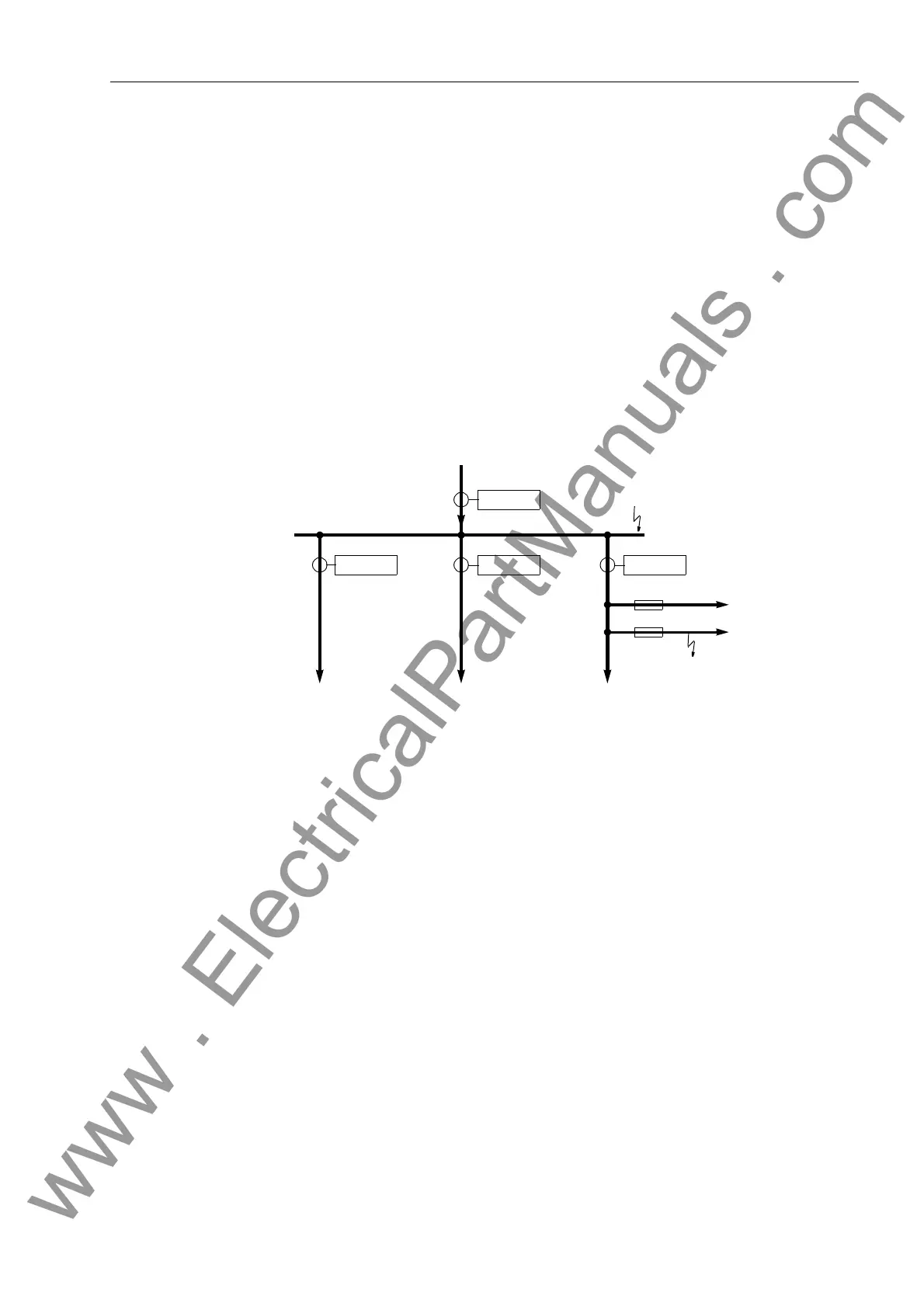